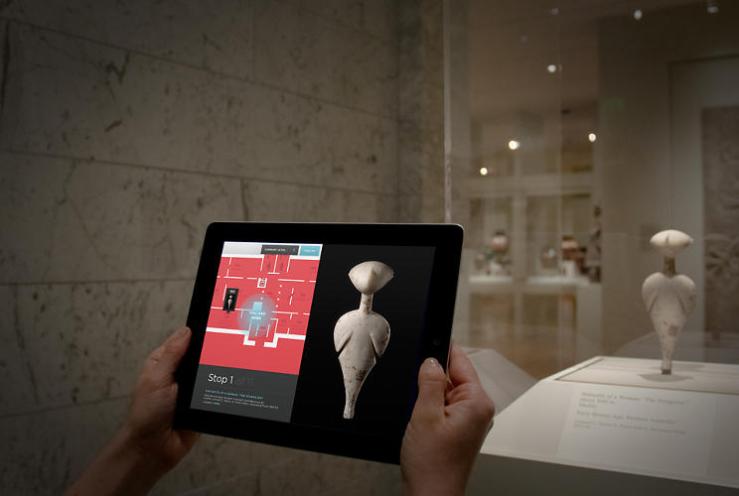
According to Business Insider, the top two museums of 2016 in the United States are #1.) The Metropolitan Museum of Art in New York, NY and #2.) the Cleveland Museum of Art, Cleveland, OH. As a native Clevelander living in New York, I am very excited for both institutions but I am not surprised to see them at the top. The Metropolitan has one of the most comprehensive collections of art in the world and saw over 6.7 million visitors this past year. The Cleveland Museum of Art (CMA) also has a world-class collection, but they don’t see quite that many visitors. It is hard to compare any city to New York, but Cleveland is on par with New York on a per capita basis in terms of attendance of cultural events. These two cultural heritage institutions are leading the way for museums in many ways but the one I want to talk about here is how they are operating in the digital culture of the twenty-first century. And how they are succeeding with two different approaches.Having access to the museum collection either through exhibitions or through some digital platform is key to being successful; Why collect all this stuff if people don’t know it’s available or how to see it? Over the past decade or so it has become increasingly important for museums to engage with digital technologies not only for their own benefit but for the benefit of their visitors as well. Both The Met and the CMA have tried different approaches and experimented with various projects, but it seems clear to me that each has found a way to successfully provide their visitors with digital content and information to enrich the museum experience. The Met has achieved great things online by digitizing images and information about the objects in its collection and made it easy to use, while the CMA has created an interactive gallery and implemented technologies throughout the museum.
The Metropolitan Museum of Art
The Met knows what it is doing and knows it is doing it well. This comes from a news article posted on the museum’s website less than three months ago:
Digital Visitorship
The Met’s digital audience continues to expand. The Metropolitan Museum’s website (www.metmuseum.org) ended FY16 with a total of 32.5 million visits. The Met app, which launched in September 2014, was used nearly 1.9 million times in its first 21 months. The Museum’s Facebook account had more than 1.7 million followers (with a reach of 243 million people) in FY16, and its Twitter feed had 1.5 million followers (with tweets receiving 173 million impressions). The Met’s Webby Award-winning Instagram account had 1.4 million followers at the end of FY16.The Artist Project, The Met’s online series—in which 120 contemporary artists respond to works of art or galleries at the Museum that sparked their imaginations—was completed in June 2016. The series won Gold in Online Presence from The American Alliance of Museums Media and Technology MUSE awards, and its episodes have been viewed 3.2 million times.
The Met’s digital audience is increasingly global. In FY16, 34% of website users were international, as were high percentages of followers on The Met’s social media platforms—61% on Instagram, 53% on Twitter, and 69% on Facebook. The Museum also has a presence on two of China’s largest social media networks: its account on Weibo, launched in December 2013, had 10 million impressions through the end of FY16; and its WeChat account launched in April 2016.
Given the amount of visitors The Met sees on a daily basis and the size of their collection, implementing digital technologies in the museum would be a monumental task, a Sisyphean task even. Many of the visitors to the Met plan their trip in advance and use the museum’s website after or between their visits. The resources available online underwrite and strengthen the objects in the museums since there is already an overwhelming amount of things to see when you are in the galleries. One the most useful and easy to use digital resources available through The Met’s website is the Heilbrunn Timeline of Art History.
Cleveland Museum of Art
The CMA, on the other hand, has endeavored to do something different and to do it in the galleries. Over the past few years, the CMA has rolled out several projects that make the most of the technologies in the museum. ArtLens 2.0 is the museum’s app and was updated earlier this year. Features included are:
- Maps: Galleries are color-coded and grouped thematically to facilitate easier navigation. Tap any gallery number to see what type of art is on display in that location or find gallery descriptions by tapping the gallery name.
- Wayfinding: Create a path to explore artworks. Push the Find Me button at any time to find the exact location in the museum.
- Content: All artworks on display are identified and findable in ArtLens 2.0 with additional content available for selected artworks. New content is generated on an ongoing basis.
- Nearby Artworks: Nearby artworks that might be of interest are suggested based on the artwork selected.
- Scanning: Using innovative image-recognition software, ArtLens 2.0 seamlessly recognizes a selection of two-dimensional artworks and provides additional curatorial and interpretive content.
- You: Favorite artworks by tapping the heart icon on the Collection Wall in Gallery One or on individual artworks in the app. All favorites are saved under “You.” Favorites can be used to create personalized tours, find specific artworks in the museum or share on social media.
The other big-ticket draw to the CMA for those interested in using technology in the museum is Gallery One and Studio Play. These galleries and spaces are dedicated to interactive digital technologies that connect the objects for the collection to visitors in novel ways. The goal is always to make the collection available to the visitor and to provide useful information to contextualize or create meaningful experiences for all.